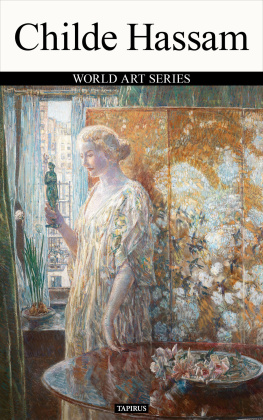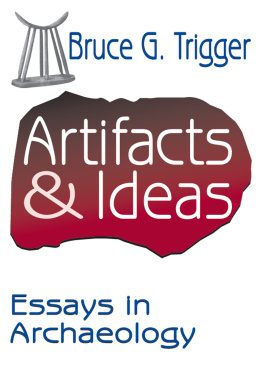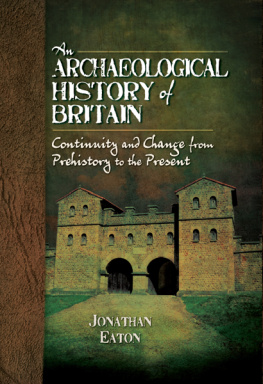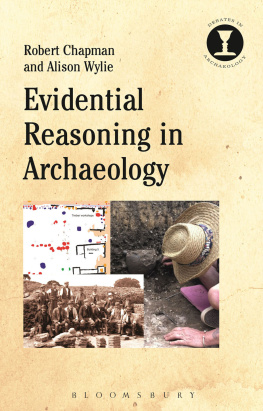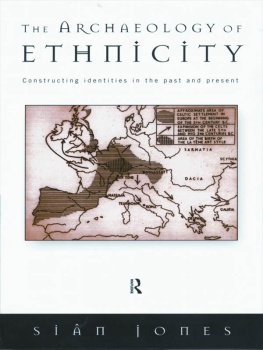ROUTLEDGE LIBRARY EDITIONS: ARCHAEOLOGY
Volume 10
PIECING TOGETHER THE PAST
PIECING TOGETHER THE PAST
The Interpretation of Archological Data
V. GORDON CHILDE
First published in 1956
This edition first published in 2015
by Routledge
2 Park Square, Milton Park, Abingdon, Oxon, OX14 4RN
and by Routledge
711 Third Avenue, New York, NY 10017
Routledge is an imprint of the Taylor & Francis Group, an informa business
1956 G. V. Childe
All rights reserved. No part of this book may be reprinted or reproduced or utilised in any form or by any electronic, mechanical, or other means, now known or hereafter invented, including photocopying and recording, or in any information storage or retrieval system, without permission in writing from the publishers.
Trademark notice: Product or corporate names may be trademarks or registered trademarks, and are used only for identification and explanation without intent to infringe.
British Library Cataloguing in Publication Data
A catalogue record for this book is available from the British Library
ISBN: 978-1-138-79971-4 (Set)
eISBN: 978-1-315-75194-8 (Set)
ISBN: 978-1-138-81278-9 (Volume 10)
eISBN: 978-1-315-74859-7 (Volume 10)
Publishers Note
The publisher has gone to great lengths to ensure the quality of this book but points out that some imperfections from the original may be apparent.
Disclaimer
The publisher has made every effort to trace copyright holders and would welcome correspondence from those they have been unable to trace.
Piecing Together the Past
THE INTERPRETATION OF ARCHOLOGICAL DATA
V. GORDON CHILDE
D.Litt., D.Sc., F.B.A.
First published in 1956
by Routledge and Kegan Paul Ltd
Boadway House, 6874 Carter Lane
London, E.C.4
Printed in Great Britain
by Butler and Tanner Ltd
Frome and London

A RCHOLOGICAL technique has been expounded lucidly and even vividly in several recent manuals. Atkinson, Cookson and Kenyon, Crawford and Wheeler have admirably explained how archologists can identify, recover, record and conserve data for history. The methods and theories used in classifying such data and in extracting history from them have not been so comprehensively and systematically explained in any modern English book. Yet to interpret and even to recognize their proper data archologists are forced to make certain peculiar assumptions though these be seldom formulated explicitly; they have elaborated distinctive categories for their classification; they in fact employnot always consistentlya whole assemblage of common words in highly uncommon specialized senses. Since 1946 I have been accustomed every alternate year to devote a course of lectures to the principles of archological classification, the current terminology and the implicit interpretative concepts. The present book is based upon these lectures.
Its aim is to explain the words to which professional archologists, like myself, do give technical meanings, the methodological hypotheses we invoke and the postulates underlying our procedures. The exposition cannot avoid being critical; inconsistencies of nomenclature and practice are too glaring and too confusing to be ignored. I have ventured to suggest a few emendations, but I have no intention of adopting them myself and no expectation that my colleagues will. So I have refrained from proposing any ideally logical system of classification and terminology. Once the reader understands what current terms really mean, he will recognize how confusing and ambiguous they may be and should be able to discount consequential errors.
I have taken my examples almost entirely from prehistoric archology, archology unaided by texts, because the most distinctively archological concepts and methods were devised just for this branch. But these concepts and methods can be appliedand profitably appliedto all branches of archology. Those of my colleagues who deal with inscribed documents and with data described in written texts, can often short-circuit the laborious procedures alone available to the prehistorian. Still, till the sixteenth century the history of applied science has to be based almost exclusively on archological data, and for the recognition and classification of processes and implements, such as screws and braces, the prehistorians techniques must often be invoked. If Romanists and medievalists could be persuaded to adopt the techniques and the categories elaborated for older periods, many problems in history might be resolved. Archology is one. The concepts discussed here are applicable to all its branches.
V. GORDON CHILDE
March 1955
A RCHOLOGY studies all changes in the material world that are due to human actionnaturally so far as they survive. The archological record is constituted of the fossilized results of human behaviour, and it is the archologists business to reconstitute that behaviour as far as he can and so to recapture the thoughts that behaviour expressed. In so far as he can do that, he becomes an historian. The aim of this book is therefore to explain how archologists order their data to form a record and how they may try to interpret them as concrete embodiments of thoughts.
The most familiar surviving results of behaviour are of course the things men have made or unmade which may be called artifacts. These include on the one hand tools, weapons, personal ornaments, charms, statuettes, and on the other farm-houses, temples, castles, canals, mineshafts, graves. It is convenient to divide artifacts into two classesrelics and monuments. The former are portable and can be removed to a museum or laboratory for study. Monuments are either earth-fast or too massive to remove and have to be studied on the spot.
But not all archological data belong to one or other of these classes, nor can be called artifacts at all. A Mediterranean shell found in a reindeer hunters cave in Central France is not an artifact, not having itself been altered by man. But its presence in Central France several hundred miles from its nearest natural habitat is a result of human action and as such an archological datum; for shells do not fly and no known natural agency would carry the cowrie shell from the Gulf of Lions to the valley of the Vezre that flows into the Bay of Biscay. So its transport is a very significant archological phenomenon.


